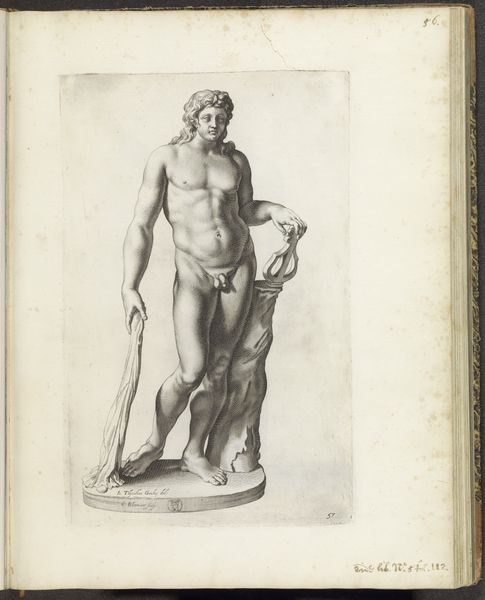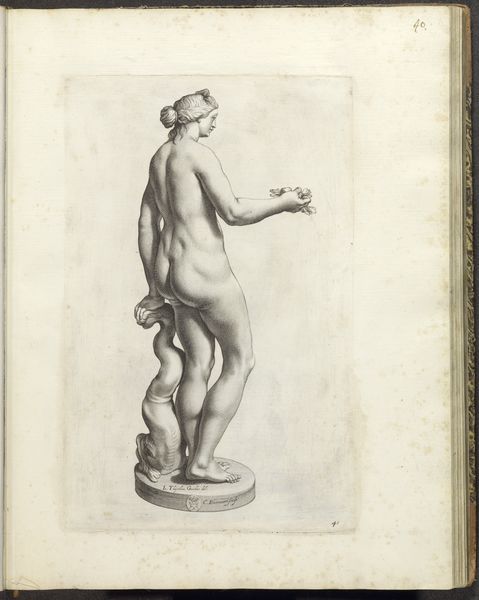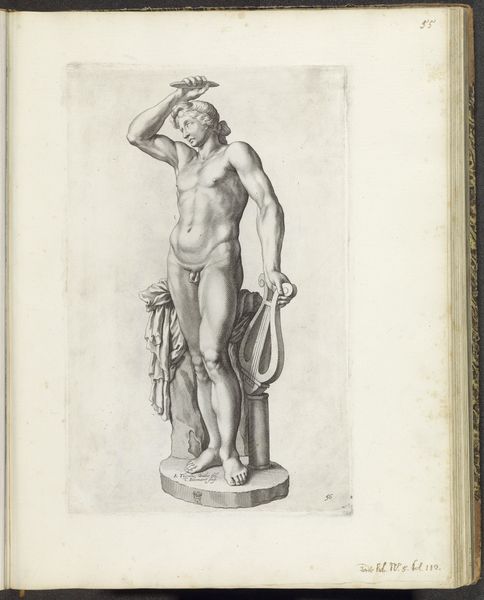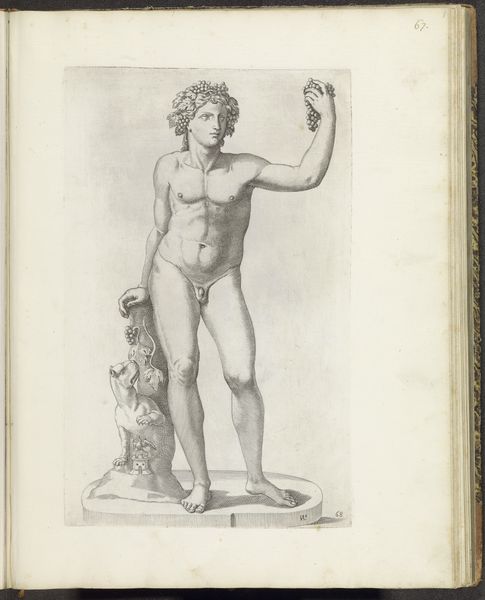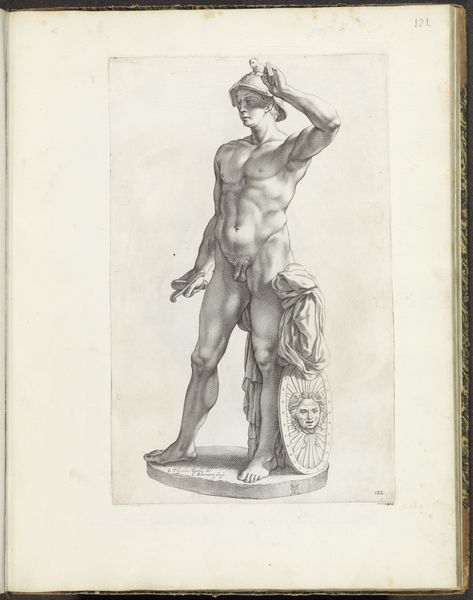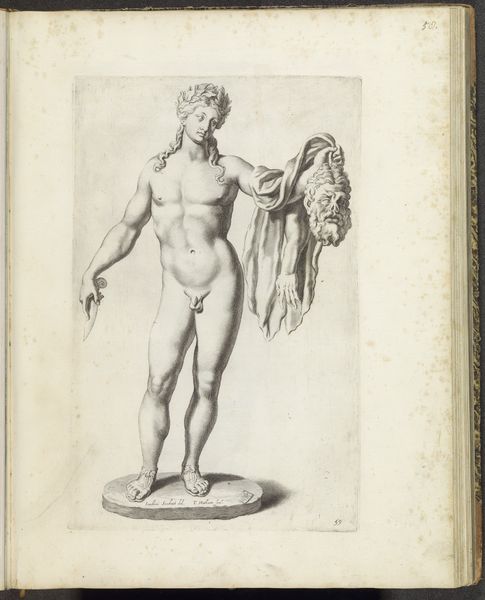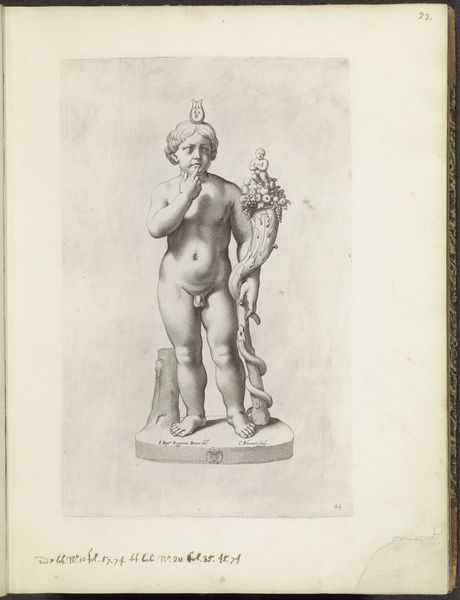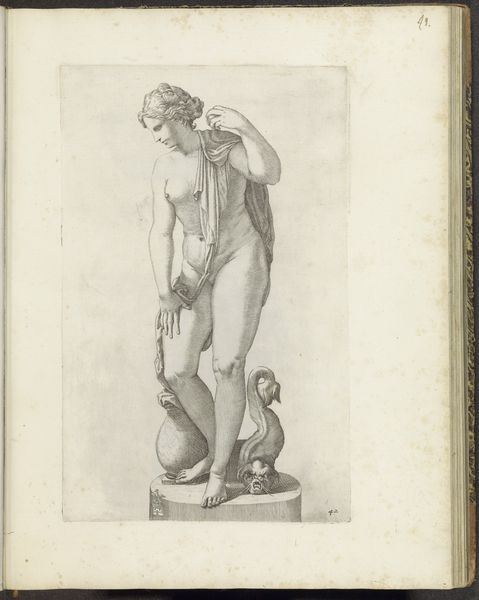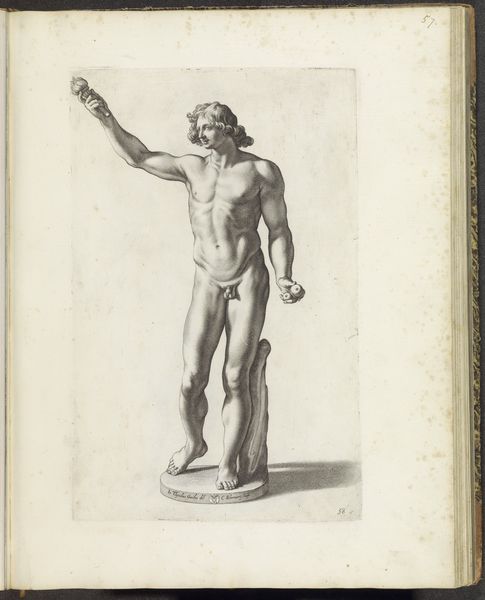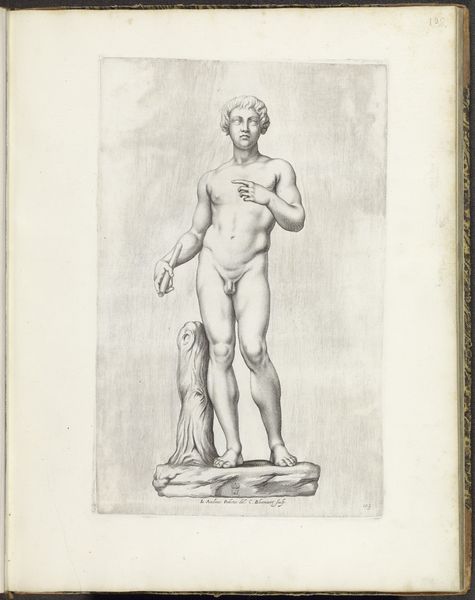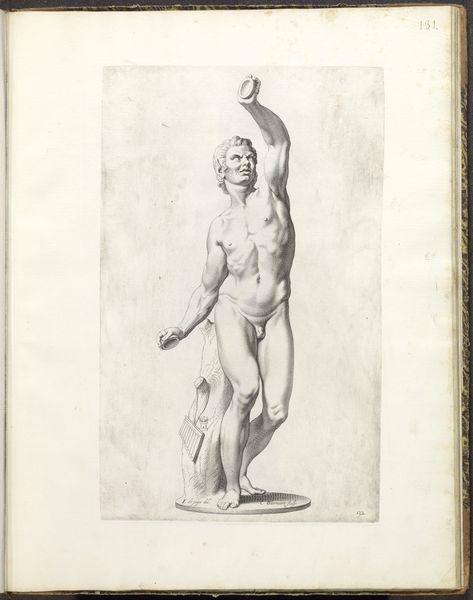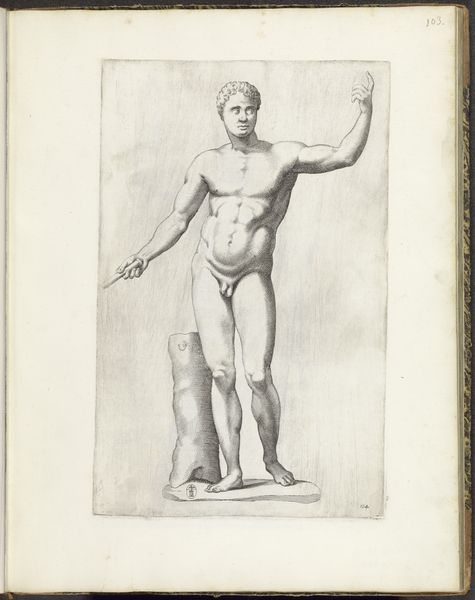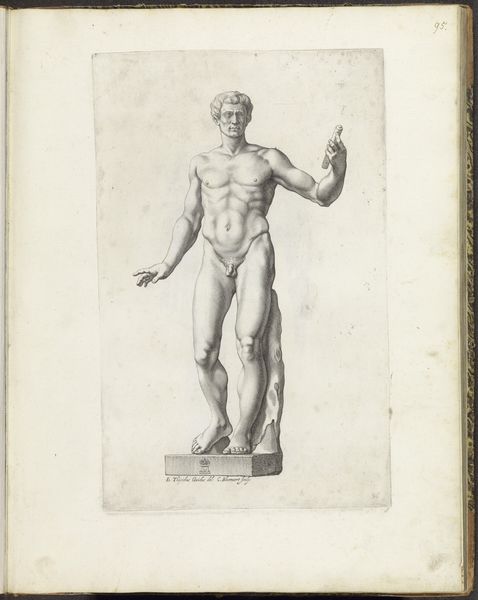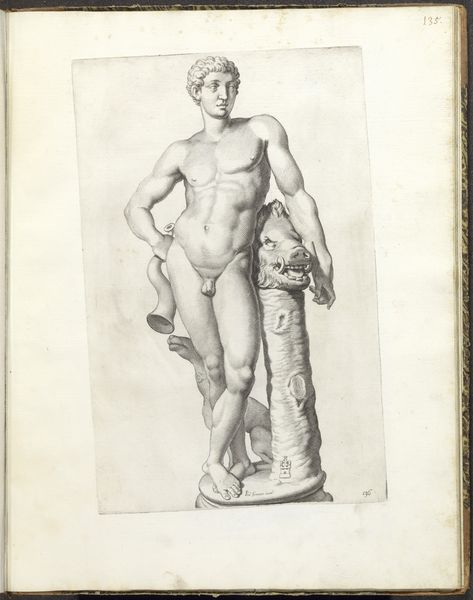
drawing, paper, ink, engraving
#
drawing
#
baroque
#
figuration
#
paper
#
ink
#
pencil drawing
#
nude
#
engraving
Dimensions: height 365 mm, width 239 mm
Copyright: Rijks Museum: Open Domain
Editor: This is "Standbeeld van Amor," or Statue of Cupid, created by Cornelis Bloemaert sometime between 1636 and 1647. It’s an engraving on paper, currently held at the Rijksmuseum. It depicts a nude Cupid figure, wings and all, almost like a classical sculpture. It has quite a muted, stone-like quality due to the use of ink. What's your interpretation of this work? Curator: Let's consider the material reality. This is an engraving. Think about the labour involved, the craftsman meticulously using a tool to carve into a metal plate. Ink is then applied, pressed onto paper. It's a process of reproduction, making Cupid – usually associated with aristocratic love – available on a mass scale. The Baroque period was deeply concerned with spectacle, but also with dissemination. Editor: That’s interesting. So it's less about the artistic vision of one person, and more about a collaborative, reproducible process? Curator: Precisely. Think about who is consuming these prints. Are they wealthy collectors or a burgeoning middle class seeking access to classical themes? And how does the act of engraving, this specific technique, influence the reception of Cupid? Is he de-romanticized, perhaps even commercialized, through this material process? Editor: So, by examining the means of production and distribution, we see how even a classical figure like Cupid can become a commodity reflecting shifts in social class and accessibility. Curator: Absolutely. It is through understanding the material processes involved that we are better able to engage with this Baroque piece. What did you think of this approach? Editor: Thinking about it this way helps reveal so much more about the artwork beyond just its surface appearance. It gives an entire new, socioeconomic context. Thank you.
Comments
No comments
Be the first to comment and join the conversation on the ultimate creative platform.
